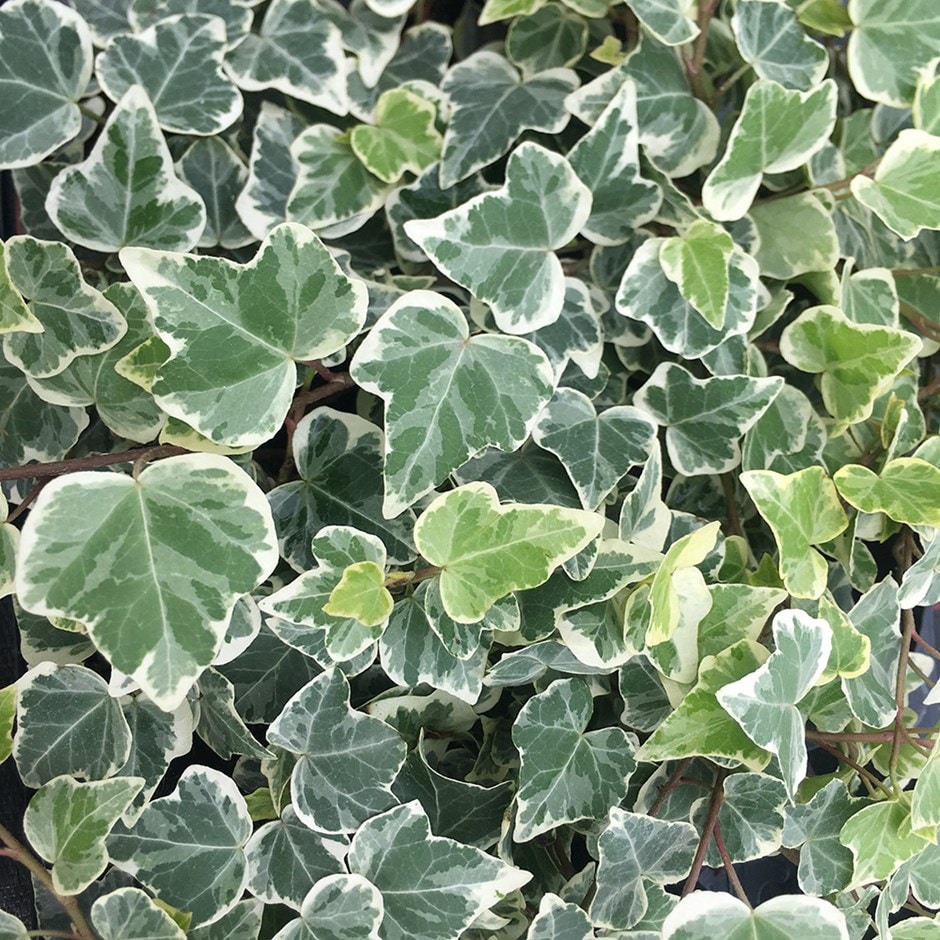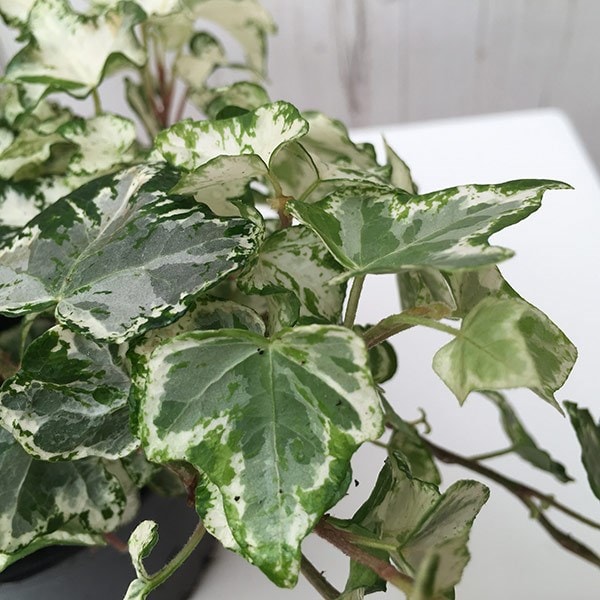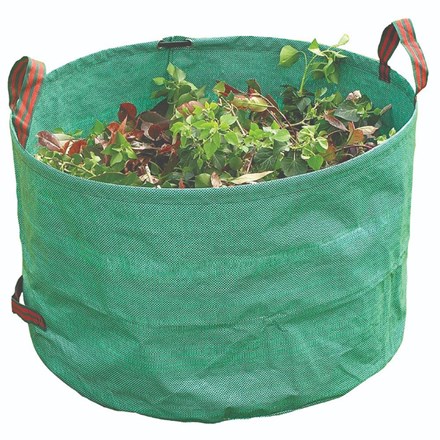Hedera helix 'White Wonder'
English ivy or common ivy
- 8.5cm pot
- £4.19 £5.99
- In stock (shipped within 2-3 working days)
- 3 × 8.5cm pots
- £10.50 £15.00 £3.50 each
- In stock (shipped within 2-3 working days)
Delivery options
- Standard £5.99
- Position: full sun or partial shade
- Soil: humus-rich, preferably alkaline, moist, well-drained soil (or John Innes No.3 potting compost for container-grown plants)
- Rate of growth: fast
- Hardiness: fully hardy
Hedera helix 'White Wonder' is an incredibly versatile plant. While young, it can be used as evergreen infill, and to hang over the edges of hanging baskets, windowboxes and patio pots. When it gets a little bigger, it is ideal for smothering a north-facing wall or fence, while if there is nothing for it to clamber onto, it will make decorative (and weed suppressing) groundcover. The variegation on the leaves can be variable, ranging from shades of rich green to near-white, and once it's established, it's a doddle to grow. This makes it perfect for low-maintenance schemes, where it will look good all through the year.
Water specimens grown as houseplants regularly during the growing season, providing a balanced liquid fertiliser each month. Keep moist during the winter months. Plants may be pruned at any time of the year to keep within bounds.
This ivy is fully hardy and can also be planted outside. If growing ivy against a wall or fence, plant 30cm (12in) away and angle towards support. Plant level with the soil surface and incorporate some well-rotted compost into the backfill, sprinkle some mycorrhizal fungi over the rootball and firm the soil around the plant. Water thoroughly after planting and mulch to retain moisture.
Once established, ivy can provide a protective habitat for birds and other animals, so any pruning should be tackled ahead of the nesting season in late winter or early spring. Before pruning, observe for a few days, and if birds are returning to one spot, consider leaving it alone as nest building may already be underway.
This ivy is fully hardy and can also be planted outside. If growing ivy against a wall or fence, plant 30cm (12in) away and angle towards support. Plant level with the soil surface and incorporate some well-rotted compost into the backfill, sprinkle some mycorrhizal fungi over the rootball and firm the soil around the plant. Water thoroughly after planting and mulch to retain moisture.
Once established, ivy can provide a protective habitat for birds and other animals, so any pruning should be tackled ahead of the nesting season in late winter or early spring. Before pruning, observe for a few days, and if birds are returning to one spot, consider leaving it alone as nest building may already be underway.
- Humans/Pets: Harmful if eaten; skin irritant/allergen


